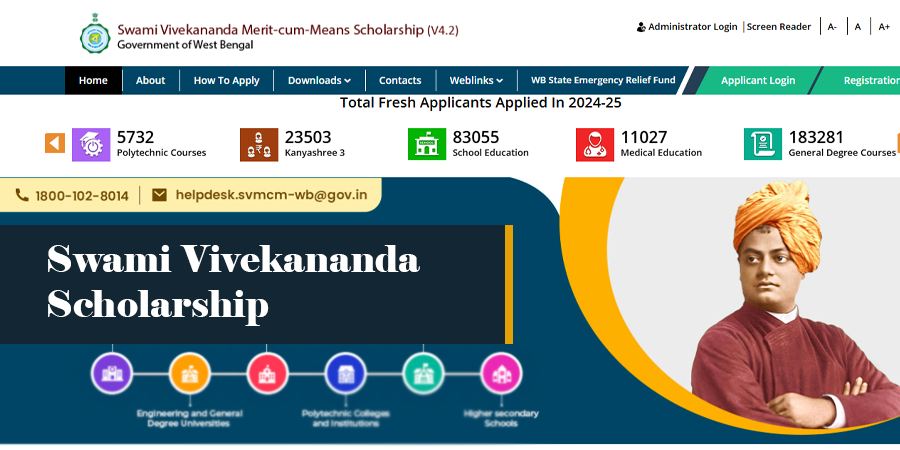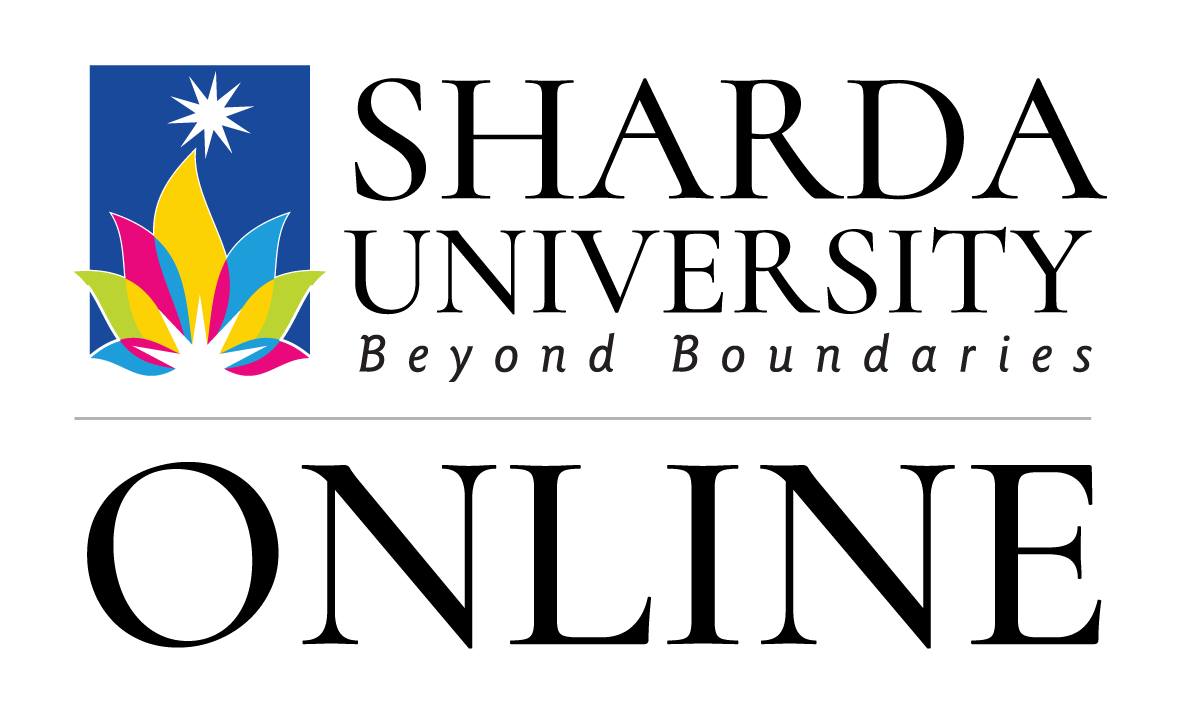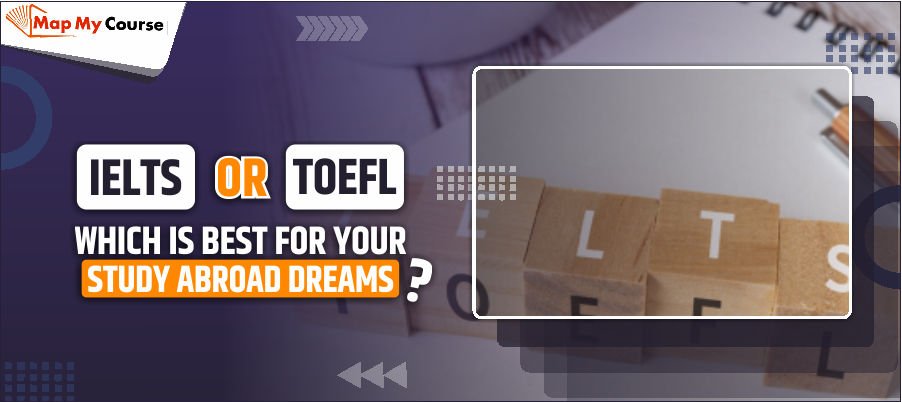Do you have a dream of pursuing your master’s in English literature from universities like Cambridge, Oxford and Harvard? If yes, then you need to keep in mind that just applying for the university won’t get you admission; for this, you need to pass the English proficiency test.
In India, there are two popular tests, such as IELTS and TOEFL. Both tests are accepted by top universities of the world and are designed to check your reading, writing, listening, and speaking skills. Both exams follow different formats, scoring methods, and even test styles.
Want to know more about it? Then read our blog on IELTS vs TOEFL and decide which is Best for Your Study Abroad Dreams? Today, we are going to find the difference between them.
What Are IELTS And TOEFL?
IELTS and TOEFL are both standardized tests designed to measure the English language proficiency of non-native speakers. These exams are for students looking to study abroad, especially in English-speaking countries. While they serve the same purpose, there are key differences between them in terms of format, approach, and focus.
IELTS (International English Language Testing System) is recognized by over 10,000 schools, universities, and organizations in more than 140 countries. It tests your skills in listening, reading, writing, and speaking. There are two main types of IELTS: Academic IELTS, which is for students applying to universities for undergraduate or postgraduate courses, and General Training IELTS, which is used for people who want to work or migrate to English-speaking countries.
TOEFL (Test of English as a Foreign Language) is another exam widely accepted test, especially in the United States, but it is recognized by universities all around the world. It also tests your listening, reading, writing, and speaking skills, but the test is computer-based. TOEFL is often seen as more focused on academic English, as it is designed to measure how well you can use English in a university setting.
What Is The Full Form Of IELTS And TOEFL?
- Full Form of IELTS is International English Language Testing System. It is a widely recognized test that checks how well non-native speakers can use English, especially for those who want to study or work in places where English is the main language.
- Full Form of TOEFL is Test of English as a Foreign Language. It is an academic test that measures how well non-native speakers can understand and use English, particularly in a university or academic setting.
IELTS vs TOEFL: A Detailed Comparison
Here is the detailed comparison of both exams in table:
Feature | IELTS | TOEFL |
Full Form | International English Language Testing System | Test of English as a Foreign Language |
Conducted By | Managed by the British Council, IDP: IELTS Australia, and Cambridge Assessment English. These organizations ensure global availability. | Created and administered by ETS (Educational Testing Service), a US-based organization. |
Purpose | Available in two formats:
| Designed specifically for academic purposes to test skills required in universities. |
Test Format | Computer-based or paper-based | Computer-based. |
Test Duration | 2 hours 45 minutes, | Around 3 hours |
Test Sections | Listening, Reading, Writing, Speaking | Listening, Reading, Writing, Speaking |
Speaking Section | A live, face-to-face interview with an examiner | Responses are recorded via a microphone and assessed later by evaluators. |
Accent Focus | Includes accents from British, Australian, Canadian, and other global varieties, which could benefit students familiar with international English. | Primarily focuses on American accents, reflecting typical academic contexts in the USA. |
Writing Tasks | Two tasks:
| Two tasks:
|
Reading Section | Features shorter passages with a mix of academic and general topics, often easier for those who prefer varied question formats. | Consists of longer passages, typically academic articles or textbooks, requiring focused reading skills. |
Listening Section | Shorter audio clips with a variety of accents, often conversational or instructional. | Longer audio recordings, mainly with American accents, such as lectures and campus discussions. |
Scoring System | Scored on a band scale of 0–9 for each section, with an overall band score that averages the four sections. | Each section is scored out of 30 points, leading to a total score of 120. |
Cost in India | Costs approximately Rs.17,000, but prices can vary slightly by location. | Costs around Rs.16,000, depending on the USD-INR exchange rate at the time. |
Preferred In | Accepted globally but highly preferred in the UK, Australia, New Zealand, and Canada. | Accepted globally but widely recognized and preferred in the USA for academic admissions. |
Test Difficulty | Balanced across all sections, offering varied question types. Suitable for candidates who prefer structured yet diverse tasks. | Focuses on academic-style English, which can be more challenging for candidates unfamiliar with US academic environments. |
Result Availability | Results are usually available in 3–5 days for computer-based tests (slightly longer for paper-based). | Results are typically available in 6 days online, with paper score reports taking longer. |
IELTS vs TOEFL: Test Format
IELTS Test Format
The IELTS exam is divided into four sections: Listening, Reading, Writing, and Speaking. Here’s a breakdown:
- Listening (30 minutes): You will listen to four recordings of native English speakers, followed by a series of questions. This section tests how well you understand spoken English in various contexts, such as conversations, lectures, and discussions.
- Reading (60 minutes): This section consists of 40 questions based on three reading passages. The texts are taken from books, magazines, newspapers, and websites, and they can vary in complexity. You’ll need to answer questions that test your comprehension, vocabulary, and understanding of the main ideas.
- Writing (60 minutes): There are two tasks in the writing section: Task 1 involves describing a graph, chart, or diagram, and Task 2 asks you to write an essay in response to a question or problem.
- Speaking (11-14 minutes): The speaking test is an in-person interview with an examiner, where you’ll be asked questions about familiar topics, as well as discuss a topic in depth. This section tests your ability to communicate clearly and fluently in English.
TOEFL Test Format
- Listening (41-57 minutes): You will listen to conversations and lectures, then answer questions about the content. This section focuses on understanding spoken English in academic settings, such as university lectures or conversations between students and professors.
- Reading (54-72 minutes): The reading section includes 3-4 academic passages, and you will answer questions that test your ability to understand and analyze the information presented.
- Writing (50 minutes): You will be required to complete two tasks: one integrated task, where you’ll read a passage and listen to a lecture before writing your response, and one independent task, where you write an essay on a given topic.
- Speaking (20 minutes): In TOEFL, the speaking section is computer-based. You’ll record your responses to six questions, which are then scored by human raters. The questions focus on both personal opinions and academic topics.
IELTS vs TOEFL: Scoring System
IELTS Scoring System
In IELTS, each of the four sections (Listening, Reading, Writing, and Speaking) is scored on a band scale from 0 to 9. These band scores are then averaged to give you an overall score. Here’s how the bands are defined:
| Band Score | Proficiency Level | Description |
| Band 9: | Expert User | Fully operational command of the language |
| Band 8: | Very Good User | Occasional unsystematic errors |
| Band 7: | Good User | Generally effective command with occasional mistakes |
| Band 6: | Competent User | Generally effective, but with some mistakes |
| Band 5: | Modest User | Partial command, frequent mistakes |
| Band 4: | Limited User | Basic competence but frequent errors |
| Band 3: | Extremely Limited User | Difficulty understanding even basic language |
| Band 2: | Intermittent User | Can understand only a few words |
| Band 1: | Non-User | Essentially no ability to use the language |
| Band 0: | Did Not Attempt the Test | Did not attempt the test |
TOEFL Scoring System
In TOEFL, each of the four sections (Listening, Reading, Writing, Speaking) is scored between 0 and 30, and your total score is the sum of all these sections, with a maximum possible score of 120. Here’s a breakdown:
| Section | Score Range | Proficiency Level |
| Listening: Score Scale is (0 and 30) | 24–30 | Advanced |
| 18–23 | High-Intermediate | |
| 4–17 | Low-Intermediate | |
| 0–3 | Below Low-Intermediate | |
| Reading: Score Scale is (0 and 30) | 22–30 | Advanced |
| 17–21 | High-Intermediate | |
| 9–16 | Low-Intermediate | |
| 0–8 | Below Low-Intermediate | |
| Writing: Score Scale is (0 and 30) | 25–30 | Advanced |
| 20–24 | High-Intermediate | |
| 16–19 | Low-Intermediate | |
| 10–15 | Basic | |
| 0–9 | Below Basic | |
| Speaking: Score Scale is (0 and 30) | 24–30 | Advanced |
| 17–23 | High-Intermediate | |
| 13–16 | Low-Intermediate | |
| 7–12 | Basic | |
| 0–6 | Below Basic | |
IELTS vs TOEFL: Question Types
Section | IELTS Question Types | TOEFL Question Types |
Listening |
|
|
Reading |
|
|
Writing |
|
|
| ||
Speaking |
|
|
IELTS and TOEFL: Comparing Score
Many students wonder how IELTS and TOEFL scores compare because both exams have different scoring systems. Let’s break it down to help you understand how they match up.
- IELTS: The IELTS exam gives a band score between 1 and 9. Your overall score is the average of the four sections: Listening, Reading, Writing, and Speaking.
- TOEFL: The TOEFL exam is scored on a scale from 0 to 120. Each section (Reading, Listening, Speaking, and Writing) is scored out of 30, and the total score is the sum of all section scores.
Here’s a simple chart to help you compare IELTS and TOEFL scores:
IELTS Band | TOEFL Score Range |
9 | 118–120 |
8.5 | 115–117 |
8 | 110–114 |
7.5 | 102–109 |
7 | 94–101 |
6.5 | 79–93 |
6 | 60–78 |
5.5 | 46–59 |
5 | 35–45 |
4.5 | 32–34 |
4 | 31 and below |
3 | 0–30 |
2 | 0–30 |
1 | 0–30 |
IELTS vs TOEFL: Comparing Score Section-wise
Listening Section Score Comparisons
- IELTS: The IELTS exam gives a band score between 1 and 9. Your overall score is the average of the four sections: Listening, Reading, Writing, and Speaking.
- TOEFL: The TOEFL exam is scored on a scale from 0 to 120. Each section (Reading, Listening, Speaking, and Writing) is scored out of 30, and the total score is the sum of all section scores.
IELTS Score | TOEFL Score |
4 | 0 |
4.5 | 3 |
5 | 4–6 |
5.5 | 7–11 |
6 | 12–19 |
6.5 | 20–23 |
7 | 24–26 |
7.5 | 27 |
8 | 28 |
8.5 | 29 |
9 | 30 |
Speaking Section Score Comparisons
IELTS Score | TOEFL Score |
– | 0–11 |
4.5 | 12–13 |
5.0 | 14–15 |
5.5 | 16–17 |
6.0 | 18–19 |
6.5 | 20–22 |
7.0 | 23 |
7.5 | 24–25 |
8.0 | 26–27 |
8.5 | 28–29 |
9.0 | 30 |
Reading Section Score Comparisons
IELTS Score | TOEFL Score |
– | 0–2 |
4.5 | 3 |
5 | 4–7 |
5.5 | 8–12 |
6 | 13–18 |
6.5 | 19–23 |
7 | 24–26 |
7.5 | 27–28 |
8 | 29 |
8.5 | 29 |
9 | 30 |
Writing Section Score Comparisons
IELTS Score | TOEFL Score |
– | 0–11 |
4.5 | 12–13 |
5.0 | 14–17 |
5.5 | 18–20 |
6.0 | 21–23 |
6.5 | 24–26 |
7.0 | 27–28 |
7.5 | 29 |
8.0 | 30 |
8.5 | 30 |
9.0 | 30 |
IELTS vs TOEFL: Cost Comparison
The cost of the IELTS and TOEFL exams in India is almost the same. The IELTS exam costs around Rs.17,000 for both the paper-based and computer-based versions. The TOEFL exam costs about Rs.16,900. So, the price difference is not much, but it’s still something to keep in mind when planning your budget.
However, the exam fees are just one part of the total cost. You’ll also need to consider extra costs like study materials, practice tests, and prep courses. These can add up, so it’s important to plan for all of these expenses when preparing for the exam.
TOEFL vs IELTS Which Is Easier For Indian Students
When choosing between IELTS and TOEFL, the test that feels easier depends on your preferences.
IELTS has four sections: Listening, Reading, Writing, and Speaking, with the Speaking test being an in-person interview, which some students find more comfortable. TOEFL also has four sections, but the Speaking test is computer-based.
IELTS uses a variety of question types like matching and fill-in-the-blanks, while TOEFL focuses mainly on multiple-choice and short-answer questions. IELTS uses British English, while TOEFL uses American English, so choose based on which you’re more familiar with.
IELTS takes about 2 hours 45 minutes, while TOEFL takes 3 hours, with the Speaking section included in the main exam. IELTS features various accents, while TOEFL mainly uses American accents.
Ultimately, if you prefer face-to-face interaction, IELTS might be easier. If you prefer a more structured, computer-based test, TOEFL could be better. Try practice tests to see which one suits you.
Which Test is Best for Your Study Abroad Dreams?
When choosing between IELTS and TOEFL for your study abroad goals, it largely depends on the universities or countries you’re targeting. IELTS is preferred by institutions in the UK, Australia, Canada, and New Zealand, while TOEFL is more commonly accepted in the United States. However, both tests are widely recognized worldwide. If you feel more comfortable with a face-to-face speaking interview, IELTS might be the better choice, while TOEFL offers a more structured, computer-based test format. Check the requirements of the universities you’re applying to, and choose the test that aligns with your strengths and preferences. Both tests are valid, so consider your comfort with the test format and availability of test centers in your region.
IELTS and TOEFL Test Preparation Tips
- Understand the Test Format: Learn the structure of each test. Both have Listening, Reading, Writing, and Speaking sections, but the formats differ.
- Use Official Materials: Practice with real test materials like IELTS Official Practice or TOEFL Practice Tests to understand the question types.
- Take Practice Tests: Simulate test conditions to improve time management and identify weak areas.
- Focus on Weak Areas: If listening or speaking is difficult, practice with podcasts or by talking with friends. Work on writing essays and reading articles.
- Build Vocabulary: Read books, watch movies, and use new words in your writing and speaking.
- Use Online Resources: Take advantage of free resources like Magoosh, IELTS Liz, and YouTube channels.
- Consider a Prep Course: If needed, join a prep course for personalized feedback and better focus.
- Stay Consistent: Stick to a study schedule, and stay positive and calm throughout your preparation.
Check Out More Blogs
Conclusion
Choosing between IELTS and TOEFL might seem tough and confusing, but both are great options for proving your English proficiency; however, choosing one depends on your comfort and study plans.
If you are comfortable with British accents and face-to-face speaking, then IELTS is the preferred exam, while if you are comfortable with CBT and the American accent, then you can choose TOEFL.
This guide on IELTS vs TOEFL: Which is Best for Your Study Abroad Dreams? was made to help you choose wisely. Check your target university’s requirements, try practice tests, and go with the exam that matches your strengths.
Frequently Asked Questions
Q1. Which is more accepted: IELTS or TOEFL?
Ans. Both are globally accepted. IELTS is preferred in the UK, Canada, Australia, and New Zealand, while TOEFL is more common in the US.
Q2. Can I take both IELTS and TOEFL?
Ans. Yes, but it’s usually unnecessary. Check the university’s requirement and choose accordingly.
Q3. Which test costs less in India?
Ans. IELTS costs around ₹17,000; TOEFL is slightly cheaper at ₹16,900, depending on exchange rates.
Q4. How often can I take IELTS or TOEFL?
Ans. You can retake them as many times as needed. Just prepare well before reappearing.
Q5. Is the preparation method the same for both?
Ans. No. IELTS includes a live speaking test and other questions, while TOEFL is computer-based and more academic in tone.


















